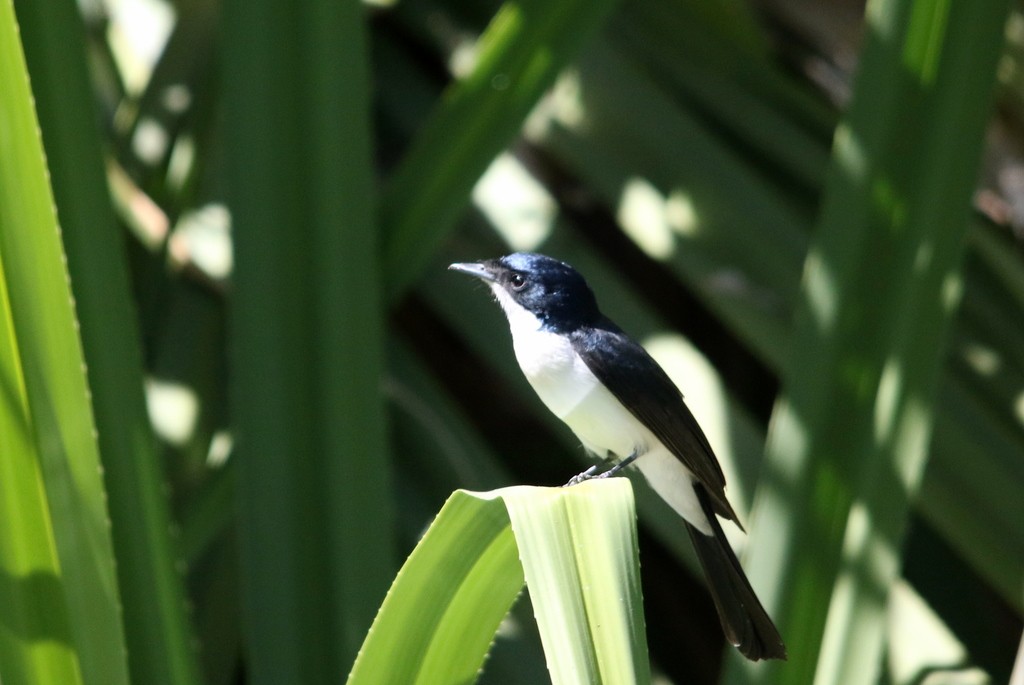Paperbark Flycatcher
A species of Broad-billed Flycatchers and Allies Scientific name : Myiagra nana Genus : Broad-billed Flycatchers and Allies
Paperbark Flycatcher, A species of Broad-billed Flycatchers and Allies
Botanical name: Myiagra nana
Genus: Broad-billed Flycatchers and Allies
Content
Description General Info
 Photo By michaelmcmaster923 , used under CC-BY-NC-4.0 /Cropped and compressed from original
Photo By michaelmcmaster923 , used under CC-BY-NC-4.0 /Cropped and compressed from original Description
The paperbark flycatcher is broadly similar to the restless flycatcher, with entirely black upperparts from the crown and sides of the head, in contrast with entirely white underparts from the throat to the vent. It is a smaller bird, at only two-thirds the weight of its southern relative, and has a proportionately shorter and broader bill, with longer and stouter rictal bristles. There is no overlap in size between the species. The back and the crown of nana are the same glossy black, while inquieta has a slightly paler, slate-grey, back. There are also differences in the vocalisations: nana almost never use the distinctive "scissors-grinding" call of inquieta. 
Size
18 cm
Nest Placement
Tree
Feeding Habits
Paperbark Flycatcher primarily consumes arthropods, including spiders, centipedes, and various insects. It forages alone or in pairs, typically near water, and exhibits a unique hovering behavior over shrubs, tall grass, or water while sweeping its tail side to side.
Habitat
The habitat of paperbark Flycatcher predominantly includes tropical savanna woodlands dominated by eucalypt trees and Melaleuca woodlands, often referred to as paperbark forests. These birds are also commonly found in riverine woodlands, along with areas adjacent to slow-moving or static water bodies such as billabongs. Additionally, paperbark Flycatcher inhabits thickets of pandanus, as well as scrub and sedge beds situated on grassy floodplains near rivers.
Dite type
Insectivorous
General Info
Feeding Habits
Bird food type
Behavior
A conspicuous bird, the paperbark flycatcher is usually seen in pairs or singly. It sweeps its tail restlessly from side to side and often hovers near the ground when searching for food. 
Distribution Area
The flycatcher is found in northern Australia, from the Kimberley region of Western Australia, across the Top End of the Northern Territory, to the Gulf Country and south-western Cape York Peninsula of north-west Queensland, with a population on Saibai Island in Torres Strait. It is also found in southern New Guinea from Merauke eastwards to the Bensbach River in the Middle Fly District. The paperbark flycatcher does not overlap in distribution with the restless; although their ranges abut in northern Queensland there are no signs of intergradation between the two species, and in the area where the ranges meet most of the restless flycatchers are non-breeding migrants. In Australia the paperbark flycatcher inhabits tropical eucalypt woodlands, paperbark woodlands and dry riverine woodlands. In New Guinea, where it is locally common along the lower reaches of the Bensbach River, it frequents scrub, partly submerged trees, and sedgeland bordering rivers on floodplains and savanna. 